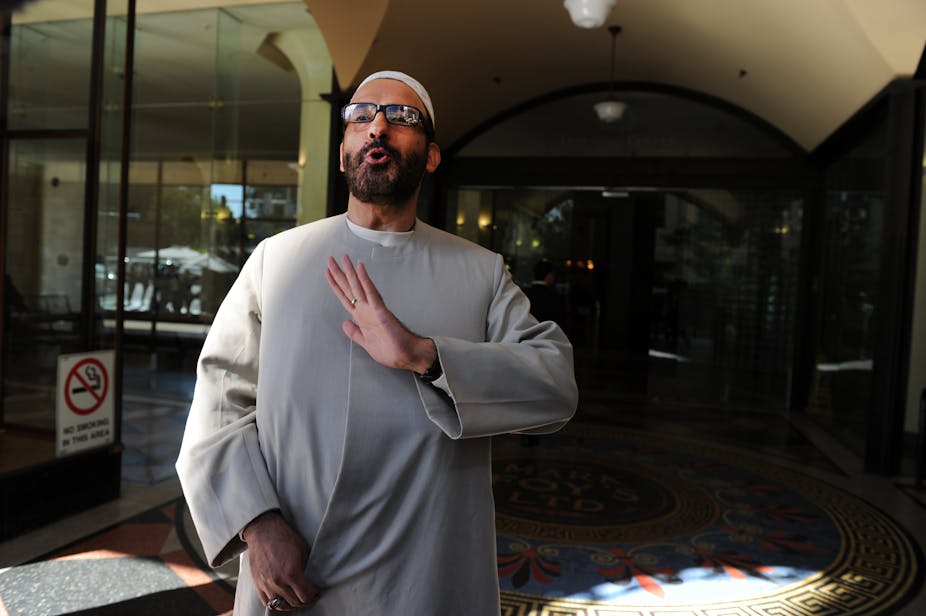On December 12, 2013, Man Haron Monis, having been charged with being an accessory to murder and facing multiple sexual assault charges, was granted bail. A year later, while still on bail, Monis began his Lindt Cafe siege, with tragic consequences.
The Guardian reported last week that the head of the New South Wales homicide squad had relayed to his superior a hearsay opinion that the prosecutor in the 2013 bail hearing was “terrible and clearly not across the brief”.
The resumption this week of the inquest into the siege, with a focus on why Monis was on bail at the time, is likely to intensify scrutiny of this issue. It is possible that there may be a witch-hunt in pursuit of the prosecutor, who may or may not have fought hard enough to keep Monis behind bars, or even the magistrate who acceded to the submissions of counsel for Monis to be granted bail.
Why we cannot afford a witch-hunt
Any such witch-hunt should be resisted for three important reasons.
The first is that governments in these circumstances, steeled by populist fervour, often go into “risk-averse” mode and make it more likely that persons charged with serious offences remain behind bars. If that happens, prisoner numbers will rise. It is well known that when governments focus on isolated examples, often under pressure from the media and public, short-sighted justice policy usually results.
Prisoner numbers in Australia are already the highest they have ever been. The rate of imprisonment of Australians (194 per 100,000 population) is at a ten-year high. A quick look at imprisonment rates in Scandinavia and Western Europe tells us that you don’t need high levels of imprisonment to keep crime at bay.

The second reason, and one allied to the first, is that more than 9000 adult prisoners are in custody because they have been refused bail. That represents about one-quarter of Australia’s total adult prison population. This proportion has grown from 14% two decades ago, and is on an unsustainable trajectory.
There are significant costs to the state (the need for more prison beds) and to remandees (for example, loss of employment and family disruption) if these trends continue.
The third reason is that our feelings of anger or frustration toward specific justice personnel may be entirely misplaced. There has long been a suspicion that what happens at the bail hearing is only the tip of the iceberg; the decision to remand a person in custody is not simply dependent upon a prosecutor’s preparation or a magistrate’s discretion, but rather is an outcome that emerges from a complex array of social and legal dynamics.
These dynamics will vary between jurisdictions and over time. How else could one explain the anomalous position in the Northern Territory, which has a rate of remand that is consistently three to four times the rate found in the rest of Australia? And why has South Australia had the highest remand proportion of any jurisdiction in Australia for more than a decade?
If remand outcomes were simply a consequence of prosecutorial practice, or magistrates’ choices, then we would have to conclude that Northern Territory and South Australian magistrates were somehow different from those found in the rest of Australia, given that bail legislation is relatively uniform. That is clearly not the case. So what else is at work here?
What drives the numbers remanded in custody?
A number of studies have been conducted over the last 15 years to uncover the true drivers of the numbers remanded in custody. The research has revealed important additional factors, over and above the accountability of bail authorities, and whether or not the prosecutor was “across the brief”.
One driver relates to police practices. A person does not get to a court bail hearing unless a decision has first been made to arrest them (rather than summons them) and to refuse them police bail. The manner in which this occurs around Australia varies widely, especially in the way some police in particular jurisdictions use custodial remand as a short-term incapacitation strategy.
A second driver is found when one considers the typical characteristics of those charged. Arrested persons are today consistently found to be affected by drugs and alcohol or to suffer mental health problems. In some jurisdictions, resources to house and care for accused persons with specific needs are far more available. The likelihood of bail is therefore greater.
Any justice system that can draw on a wide range of community resources – such as access to affordable housing, mental health services and drug rehabilitation – will enjoy lower remand-in-custody rates.
Thus the key to understanding remand-in-custody fluctuations is more likely to be discovered outside the courtroom than inside. The decisions made by the non-judicial participants in the process, especially police decision-makers and the information that they choose to provide to the courts, and parliamentarians, who may or may not choose to spend on resources for accused persons, are as crucial to the outcome as any decision made by a magistrate.
What this means is that we need to be a little more forgiving regarding the attentiveness (or otherwise) of the public prosecutor and the decision of the magistrate to grant Monis bail in December 2013. Along the way we need to remind ourselves that we owe it to all accused persons, who are entitled to the presumption of innocence, to protect them from becoming scapegoats in a political exercise driven by risk-aversion.

